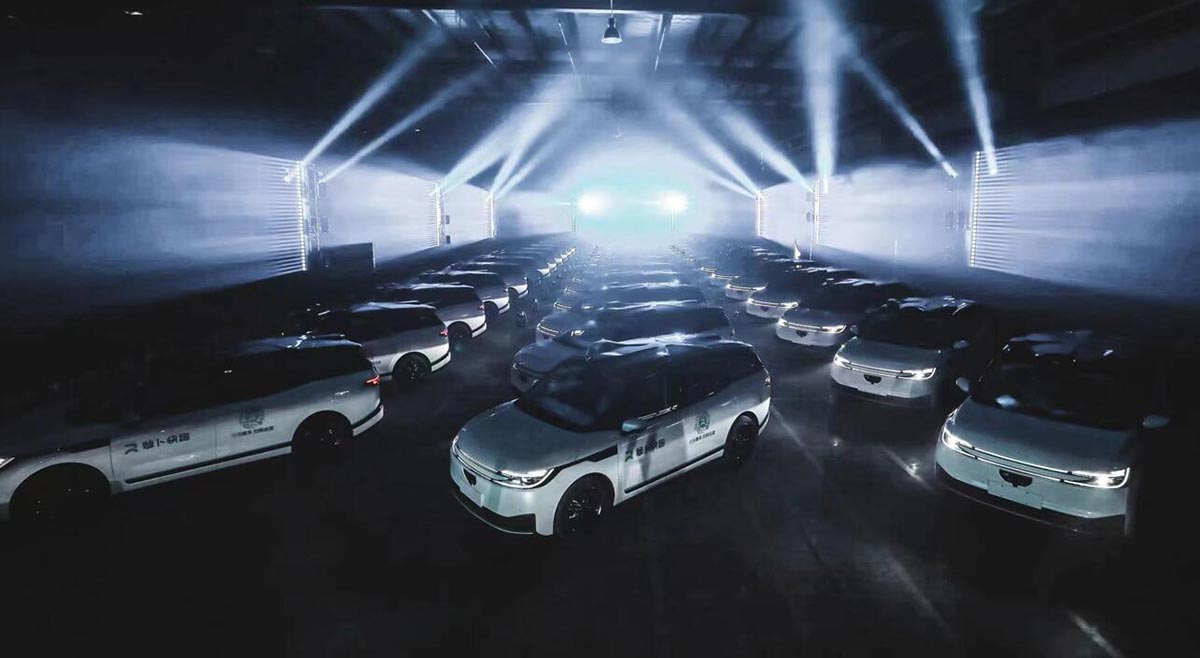Sign up for daily news updates from CleanTechnica on email. Or follow us on Google News!
In the USA, naturally, most discussion of robotaxis centers around Waymo, Cruise, and Tesla. And perhaps increasingly Zoox. However, on the other side of the world, there’s a different robotaxi service making a lot of progress and getting a lot of attention. That would be Baidu Apollo Go. For those unaware, Baidu is basically the Google of China.
We’ll catch up on a handful of updates regarding Baidu Apollo Go in this article, and a tip of the hat goes to reader “UjiBebek” for pointing us in Baidu Apollo Go’s direction, but the biggest highlight has to be that the company expects the robotaxi service will become profitable next year. That would probably make it the first profitable robotaxi service in the world.
Way back in November 2021, Apollo Go got permission to charge passengers for robotaxi rides in a Beijing city district. And then in September 2023, it (as well as competing robotaxi startup Pony.Ai) was given permission to provide such commercial rides without having any staff in the car. Reportedly, Apollo Go provided about 839,000 rides in the last quarter of 2023. Though, reportedly, the company does still have staff in many of its cars in case something goes wrong. That said, “About 45% of the orders in the fourth quarter in Wuhan were fully driverless, up from 40% the prior quarter, the company said,” CNBC wrote in May. Last week, Global Times reported the figure for driverless vehicles was 55% in Wuhan.
Also, in March, Baidu’s robotaxi firm started offering 24/7 service — the first robotaxi service in China to offer that. That wasn’t Apollo Go’s only first, of course. “On February 27, 2024, Apollo Go launched fully driverless rides across the challenging landscape of the Yangtze River, covering both the north and south banks across the Yangsigang Yangtze River Bridge and Wuhan Baishazhou Bridge. Previously, in August 2023, Baidu introduced driverless airport transportation services in Wuhan, establishing itself as China’s pioneer in providing autonomous rides to and from airports, seamlessly connecting urban roads and highways. On February 23, 2024, Apollo Go unveiled a similar service in Beijing, as Baidu was approved for robotaxi pilot operation on highways to Beijing Daxing Airport.” At the time, Apollo Go was operating 300 vehicles in Wuhan, but it also had vehicles in 10 other cities (with driverless taxis available in 4 of them and testing in the other 6). The company had reached 5 million cumulative rides by January 2024.

One important part of scaling up its operations is that the company has been able to bring down its robotaxi costs a great deal. In fact, the latest version of its robotaxi vehicle reportedly costs less than half the cost of the previous version (reportedly, 60% less). “Apollo’s 6th generation robotaxi will cost around 200,000 yuan ($28,169) — or less than half that of the prior generation,” the company noted in May. Apollo plans to roll out 1,000 of these vehicles this year in Wuhan.
“With decreasing costs and increasing orders, Apollo Go’s unit economics (UE) is nearing break-even, expected to achieve balance in the fourth quarter of 2024 and turn profitable by 2025,” Baidu said in a press release at the time.
And this is with Apollo Go’s robotaxis already being highlight competitive. “Taking a robotaxi is indeed cheaper than a traditional one. The interior of the vehicle is clean and smart, allowing passengers to choose their preferred music. Additionally, with no driver in the car, I can avoid interactions and contact, making it easier to rest,” an Apollo Go rider in Wuhan told the Global Times this month. “In Wuhan, a 10-kilometer ride in a self-driving robotaxi costs between 4 and 16 yuan ($0.60-$2.30), whereas a regular ride-hailing service costs between 18 and 30 yuan,” the paper wrote.
That said, there are still drawbacks. “The wait time is long, taking 8-10 minutes from order to arrival, and the driving speed is slow, not an ideal choice for passengers in a hurry,” one rider noted. Some taxi drivers contend that people don’t feel as safe in driverless cars. Also, “But the robotaxis’ growing popularity has also sparked backlash. Wuhan residents have been complaining for months that Apollo Go cars cause traffic jams by driving slowly and stopping unexpectedly. Viral clips on social media show long lines of cars forming behind an Apollo Go vehicle that is blocking the road,” Sixth Tone writes. This controversy got especially heated about a week and a half ago when a robotaxi hit a pedestrian. The incident was reportedly “mild” and created by the pedestrian jaywalking, but it stirred up a bit of social media chaos nonetheless, of course, with pictures of a pedestrian lying on the ground spreading like urban wildfire. In another incident, a scooter rider got injured when he ran a red light and crashed into an Apollo Go vehicle. One would think that misinformation and even scams could pick up as time moves on and the network grows, and Baidu actually said in May that it has to routinely report cases to the police for misinformation. In fact, more than 10 suspects have been arrested as the result of such reports.
There are other issues with regard to local jobs stirring as well. Going on, Sixth Tone writes:
In the meantime, with robotaxis now competing directly with the city’s ride-hailing platforms and taxi companies for orders, local drivers are already feeling the impact of the technology.
China’s ride-hailing drivers were already struggling before the rise of robotaxis due to an influx of workers into the gig economy. In May, local authorities in Wuhan warned that the ride-hailing industry was becoming oversaturated.
Now, drivers are also losing business to robtaxis that offer even cheaper fares. In an article that was widely reported by domestic media, local authorities in Wuhan said that ride-hailing drivers in the city receive 13.2 orders per day on average, whereas Baidu’s robotaxis fulfill up to 20 orders per day.
Local taxi drivers are now petitioning the city to limit how many Apollo Go robotaxis are allowed on the road.
That said, the robotaxi service still requires jobs in cleaning, charging (for now), and customer service.
One does have to wonder: if Baidu’s Apollo Go is looking to be profitable next year, how far off is that for Google’s (er, Alphabet’s) Waymo in the USA?
Have a tip for CleanTechnica? Want to advertise? Want to suggest a guest for our CleanTech Talk podcast? Contact us here.
Latest CleanTechnica.TV Videos
CleanTechnica uses affiliate links. See our policy here.
CleanTechnica’s Comment Policy





